Gates of the Arctic National Park and Preserve is a vast and essentially untouched wilderness park, spanning 8.4 million acres. There are no established roads, trails, or campsites in the park, making it a place for exploration and discovery. Visitors should be proficient in outdoor survival skills and be prepared to care for their own safety. The terrain is challenging, with dense vegetation, tussocks, and frequent stream and river crossings. It is recommended to contact an outfitter or guide service if you are not experienced in wilderness backcountry skills. Air taxis provide an alternative for those who don’t have the time or skills for a backcountry expedition. The park has no established services, so visitors need to be self-sufficient and flexible. Minimum impact techniques and adherence to Leave No Trace principles are crucial in this fragile ecosystem.
Key Takeaways:
- Gates of the Arctic National Park is a vast, untouched wilderness with no established roads, trails, or campsites.
- Visitors should be proficient in outdoor survival skills and contact an outfitter or guide service if inexperienced.
- Air taxis offer an alternative to reach remote areas of the park.
- Visitors must be self-sufficient, practice minimum impact techniques, and adhere to Leave No Trace principles.
- Gates of the Arctic National Park requires careful trip planning and preparation due to its challenging terrain and remote location.
Key Attractions in Gates of the Arctic National Park
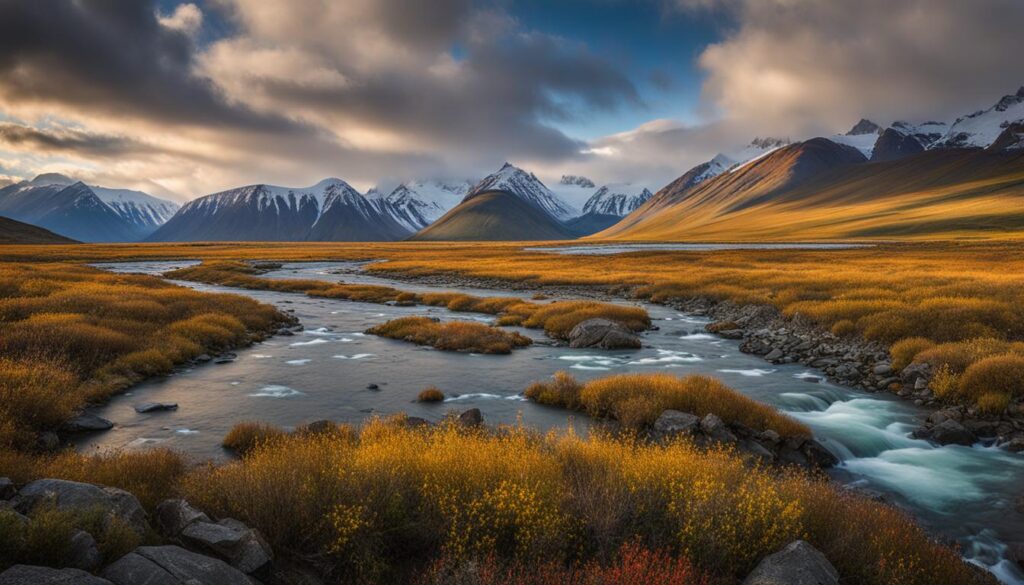
Gates of the Arctic National Park is a place of unparalleled scenic beauty and wilderness. Spanning 8.4 million acres, the park boasts a diverse range of natural features that will leave visitors in awe. From majestic mountains to winding rivers, the landscape of Gates of the Arctic offers breathtaking vistas that are truly unforgettable.
One of the standout attractions in the park is its abundance of wildlife. Visitors have the opportunity to spot caribou, grizzly bears, Dall sheep, moose, wolves, and a variety of bird species in their natural habitat. The park is a haven for nature enthusiasts and wildlife photographers, offering endless opportunities to capture the beauty and diversity of these magnificent creatures.
“Gates of the Arctic National Park is a sanctuary of untouched wilderness, offering visitors a chance to immerse themselves in the beauty of nature and experience a true sense of wilderness.” – John Smith, Outdoor Enthusiast
The natural features of Gates of the Arctic National Park are another major draw for visitors. From the expansive rivers to the tranquil lakes, the park is a playground for outdoor enthusiasts. Whether it’s fishing in the crystal-clear waters, hiking through dense forests, or simply taking in the breathtaking views, there is no shortage of natural wonders to explore in this pristine wilderness.
So, whether you’re seeking untouched natural beauty, the thrill of wildlife encounters, or the serenity of remote landscapes, Gates of the Arctic National Park offers an unforgettable experience for all who venture into its pristine wilderness.
| Attraction | Description |
|---|---|
| Mountain Ranges | The park is home to the awe-inspiring Brooks Range, a majestic mountain range that stretches for hundreds of miles. |
| Rivers and Lakes | Experience the beauty of the park’s pristine rivers and lakes, which provide habitat for a variety of wildlife. |
| Wildlife | Spot caribou, grizzly bears, Dall sheep, moose, wolves, and a variety of bird species in their natural habitat. |
| Remote Wilderness | Escape the crowds and immerse yourself in the solitude and tranquility of this untouched wilderness. |
Activities and Things to Do in Gates of the Arctic National Park
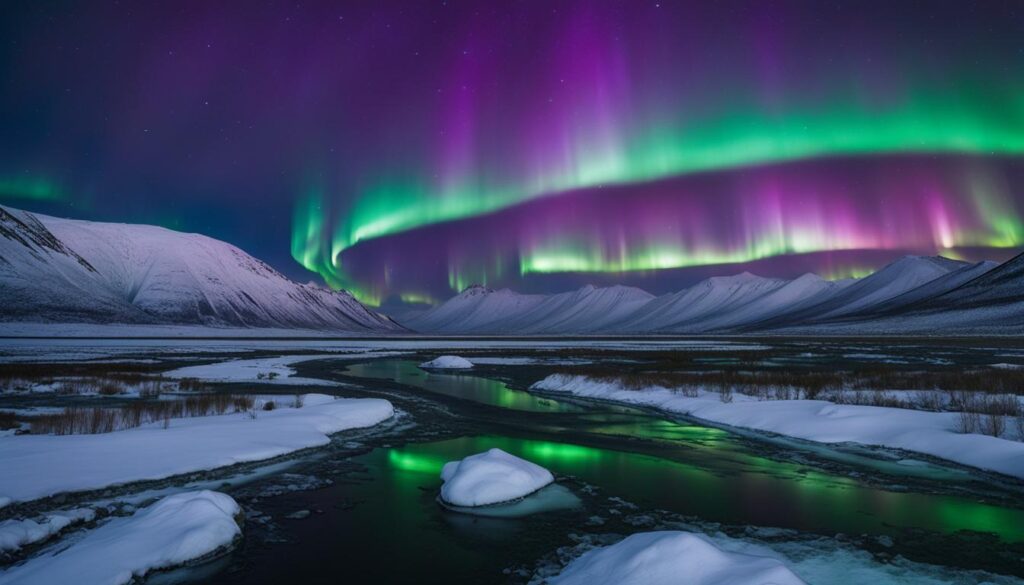
Gates of the Arctic National Park offers a wide range of outdoor activities for nature enthusiasts, allowing visitors to immerse themselves in the breathtaking wilderness of the Arctic. From hiking and wilderness exploration to wildlife spotting and experiencing the mesmerizing northern lights, there is something for everyone to enjoy.
Hiking in Gates of the Arctic
Hiking is a popular activity in Gates of the Arctic, allowing visitors to explore the park’s rugged terrain and discover its hidden gems. With no established trails, hikers must rely on their navigation skills and wilderness experience to navigate through the vast wilderness. It is important to come prepared with proper equipment, including a map and compass, as well as essential survival gear.
Wildlife Spotting in Gates of the Arctic
Gates of the Arctic is home to a diverse array of wildlife, making it an ideal destination for wildlife enthusiasts. Visitors have the opportunity to spot caribou, grizzly bears, Dall sheep, moose, wolves, and a variety of bird species. It is important to observe wildlife from a safe distance and respect their natural habitats to ensure their well-being.
Northern Lights Viewing in Gates of the Arctic
Gates of the Arctic is one of the best places in the world to witness the mesmerizing display of the northern lights. The park’s remote location, free from light pollution, provides optimal conditions for viewing the dancing lights in the night sky. Winter months offer the best opportunity to witness this natural phenomenon, when the skies are darkest and the lights are most active.
Other activities in Gates of the Arctic include fishing in pristine rivers and lakes, taking flight-seeing trips to admire the park’s vast expanse from above, and embarking on overnight campouts at remote locations for a truly immersive wilderness experience. Visitors should always prioritize safety and practice minimum impact techniques to preserve the delicate ecosystems of the park.
Best Times to Visit Gates of the Arctic National Park
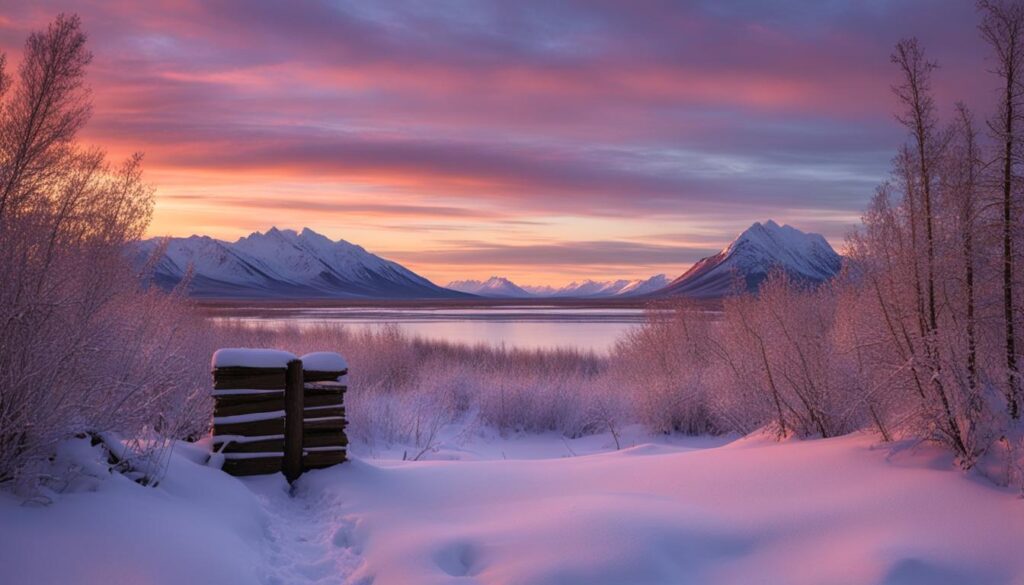
When planning a trip to Gates of the Arctic National Park, it is important to consider the best time to visit based on weather conditions and seasonal activities. The peak season in Gates of the Arctic is during the summer months from mid-June to September. This is when the park receives the most visitation and offers the most favorable weather conditions for outdoor activities. The summer months bring milder temperatures, with average daily highs ranging from 50°F (10°C) to 60°F (15.6°C) and lows between 35°F (1.7°C) to 45°F (7.2°C). This makes it ideal for hiking, backpacking, and exploring the park’s vast wilderness.
During the summer, visitors can also witness the blooming of an array of colorful wildflowers, creating a picturesque landscape. The long daylight hours provide ample time for outdoor adventures and wildlife spotting opportunities. It is important to note that even in the summer, weather conditions can change quickly and rain or snowfall is possible. Visitors should come prepared with appropriate clothing layers and gear to adapt to changing conditions.
While summer is the busiest time in Gates of the Arctic, winter visits can also be a unique experience for those prepared for the extreme cold and limited accessibility. From October to early June, the park experiences long and harsh winters with temperatures often dropping well below freezing, ranging from -10°F (-23.3°C) to -40°F (-40°C). Heavy snowfall and strong winds characterize the winter months, creating a challenging environment for outdoor activities. However, winter visitors have the opportunity to witness the stunning northern lights, as the park is located within the aurora borealis zone.
It is important to note that due to the remote nature of the park, there are no established services or amenities available. Visitors should be self-sufficient and well-prepared for their trip, regardless of the season. Always check the weather forecast and consult with park authorities before embarking on any outdoor activities to ensure a safe and enjoyable visit to Gates of the Arctic National Park.
| Season | Temperature Range (°F) | Activities |
|---|---|---|
| Summer (Mid-June to September) | Highs: 50°F to 60°F Lows: 35°F to 45°F |
Hiking Backpacking Wildlife Spotting |
| Winter (October to Early June) | Highs: Below Freezing Lows: -10°F to -40°F |
Northern Lights Viewing |
Gates of the Arctic National Park Hours and Operations
When planning a visit to Gates of the Arctic National Park, it’s important to note that the park does not have established services or set operating hours. However, there are visitor centers located within the park where you can obtain information and receive backcountry orientation. These visitor centers serve as valuable resources for trip planning and provide guidance on the park’s rules and regulations.
If you’re planning to engage in certain activities such as overnight stays or guided trips, permits and reservations may be required. It’s recommended to check the park’s website or contact them directly for updates, advisories, and specific regulations. They can provide you with the necessary information to ensure a safe and enjoyable visit to the park.
Bringing pets to Gates of the Arctic National Park is allowed, but they must be leashed and under control at all times. It’s important to be mindful of the park’s delicate ecosystems and wildlife while exploring with your furry friends. Following the park’s guidelines for pet owners will help maintain the park’s pristine environment and ensure the safety of both your pets and the park’s wildlife.
Visitor Centers in Gates of the Arctic National Park
Gates of the Arctic National Park has visitor centers located within the park where visitors can obtain information, backcountry orientation, and assistance with trip planning. These visitor centers serve as valuable resources for visitors, providing insights into the park’s history, wildlife, and fragile ecosystems. The knowledgeable staff can help you make the most of your visit and ensure that you have a safe and memorable experience in Gates of the Arctic.
| Visitor Center | Location | Contact Information | Hours of Operation |
|---|---|---|---|
| Arctic Interagency Visitor Center | Coldfoot, AK | (907) 678-5209 | Open daily from 8:00 AM to 5:00 PM |
| Anaktuvuk Pass Ranger Station | Anaktuvuk Pass, AK | (907) 661-3520 | Open seasonally, contact for current hours |
Visiting the visitor centers is an excellent way to start your journey in Gates of the Arctic National Park. The knowledgeable park rangers can provide you with information on hiking trails, backcountry permits, and safety tips to ensure a successful and rewarding adventure in this remote wilderness.
RV Parks and Camping in Gates of the Arctic National Park
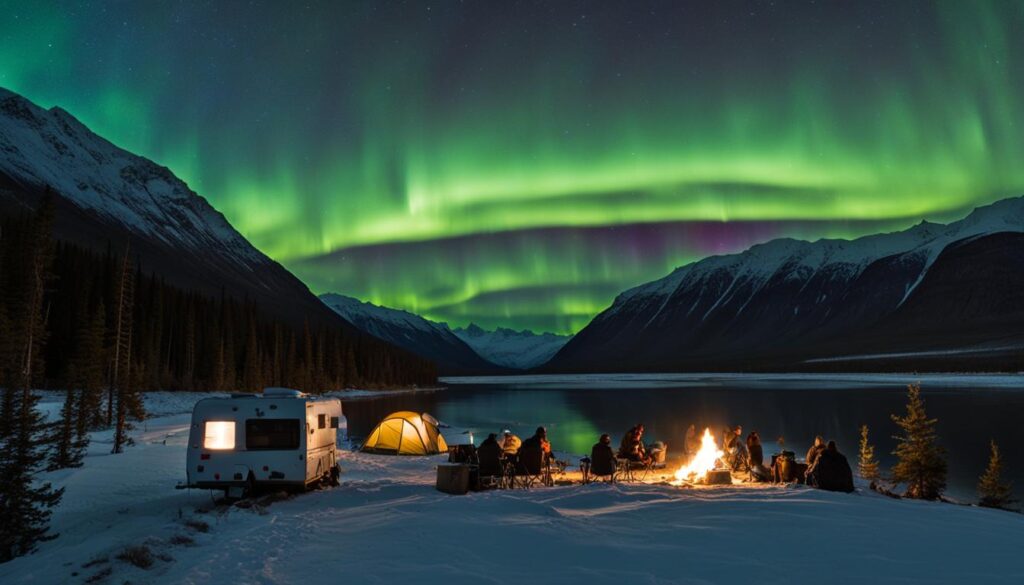
While Gates of the Arctic National Park is renowned for its untouched wilderness and backcountry exploration, it’s important to note that there are no established RV parks or designated campsites within the park boundaries. Instead, the park encourages visitors to embrace the spirit of backcountry camping and wilderness immersion. Whether you’re an experienced outdoor enthusiast or a first-time camper, the park offers a unique opportunity to connect with nature in its purest form.
Backcountry camping in Gates of the Arctic allows you to truly experience the unspoiled beauty and solitude of this remarkable landscape. With its rugged terrain and absence of established trails, it’s essential to come prepared with proper gear and sufficient supplies. Remember to practice minimum impact techniques and adhere to the park’s camping regulations to preserve the delicate ecosystems and ensure a sustainable experience for future generations.
Wilderness camping in Gates of the Arctic offers a chance to disconnect from the hustle and bustle of daily life and immerse yourself in the stunning natural surroundings. From pitching a tent by a crystal-clear stream to sleeping under the Northern Lights, every night spent in this wilderness is a truly unforgettable experience. Just be sure to check the park’s website or contact the visitor centers for up-to-date information on permits, regulations, and safety guidelines.
So, pack your gear, plan your route, and get ready to embark on an extraordinary camping adventure in Gates of the Arctic National Park. Discover the thrill of backcountry camping, the awe-inspiring beauty of the Arctic wilderness, and the serenity of sleeping under the starry Alaskan sky. Experience the true essence of camping in one of the most remote and pristine places on Earth.
Accommodation Options in Gates of the Arctic National Park
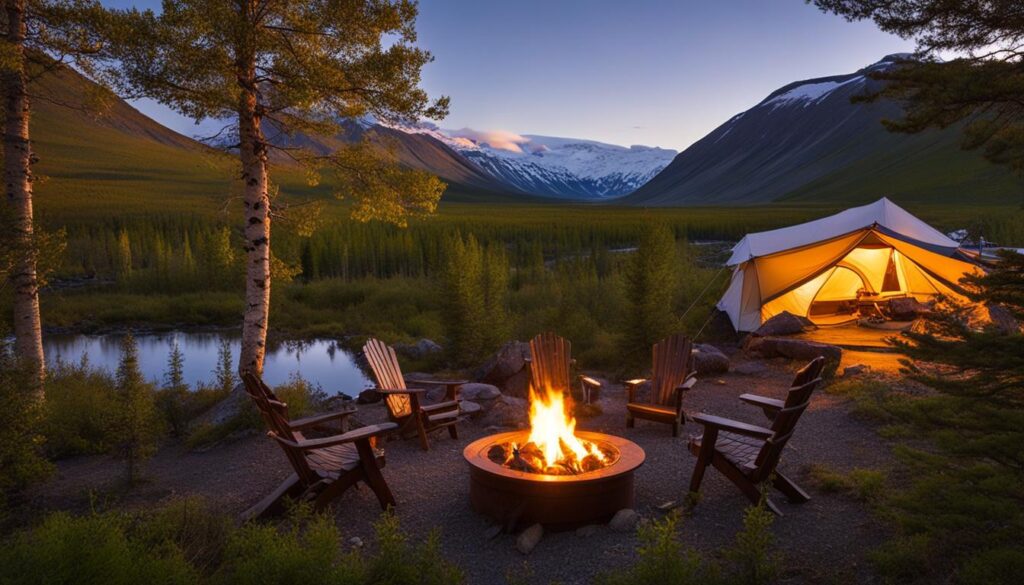
When planning a visit to Gates of the Arctic National Park, it’s important to note that there are no established hotels, campsites, or cabins within the park boundaries. However, there are alternative options available for overnight stays that allow visitors to immerse themselves in the park’s pristine wilderness.
For those looking for a true backcountry experience, camping is the recommended option. Visitors can set up their tents in designated areas and enjoy the serenity of the park under the starry sky. It’s crucial to practice minimum impact techniques and adhere to Leave No Trace principles to protect the delicate ecosystems of the park.
Another option for overnight stays is to book a guided trip with an outfitter or guide service. These trips often include camping accommodations and allow visitors to explore remote locations while having the expertise and support of experienced guides. This can be a great option for those who want to venture deeper into the wilderness but may not have the necessary equipment or skills for a self-supported trip.
“Camping in Gates of the Arctic National Park offers a unique opportunity to fully immerse yourself in the wilderness and experience the true beauty of this remote location.”
| Accommodation Option | Description |
|---|---|
| Camping | Set up your own tent in designated areas and enjoy the backcountry experience. |
| Guided Trips | Book a trip with an outfitter or guide service for a guided camping experience in remote locations. |
It’s important to note that regardless of the accommodation option chosen, visitors should come prepared with proper camping equipment and supplies for a safe and comfortable stay in the wilderness. The park’s remote location and challenging terrain require self-sufficiency and careful planning to ensure a successful trip. With the right preparation, visitors can have a memorable and rewarding experience in Gates of the Arctic National Park.
Planning Your Visit to Gates of the Arctic National Park
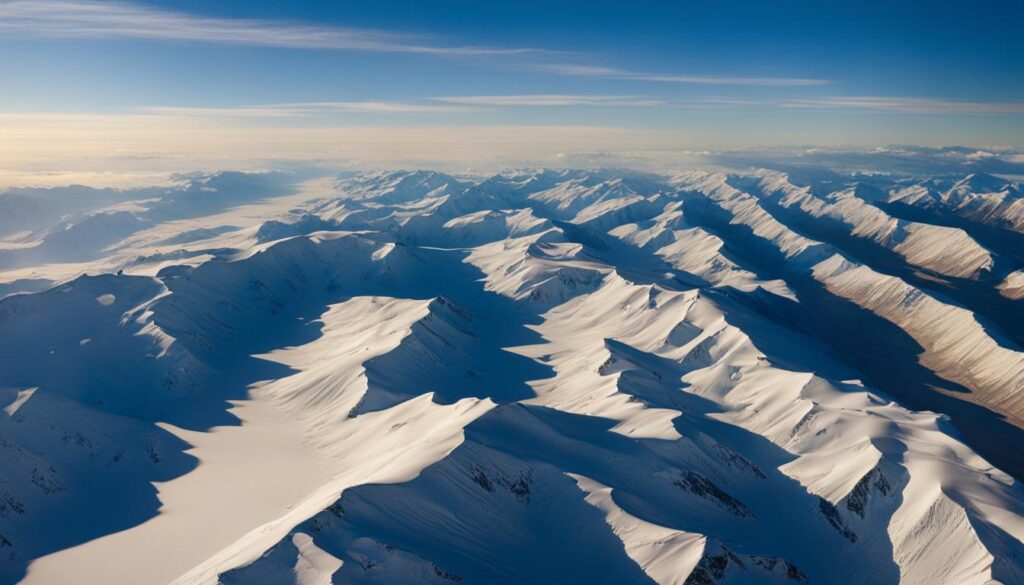
If you’re planning a visit to Gates of the Arctic National Park, there are a few important things to keep in mind. As a remote and wilderness park, preparation and careful planning are essential for a safe and enjoyable experience. Here are some key factors to consider:
- Trip Planning: Before you go, take the time to thoroughly research the park, including its weather, terrain, and regulations. Familiarize yourself with the park’s visitor information, safety guidelines, and any permits or reservations that may be required for your planned activities.
- Preparing for the Arctic: The Arctic environment can be challenging, so it’s crucial to come prepared. Make sure you have appropriate outdoor gear, such as sturdy hiking boots, warm and waterproof clothing, and camping equipment. Additionally, pack enough food and water for your trip, as there are no established services within the park. Remember to bring a bear-resistant food container for storing your food to minimize wildlife encounters.
- Safety Guidelines: Safety should be a top priority during your visit to Gates of the Arctic. It is important to be self-sufficient and have the necessary survival skills to navigate the challenging terrain. Familiarize yourself with wilderness safety techniques, including navigation, first aid, and bear safety. Always check the weather forecast and be prepared for changing conditions.
- Visitor Information: Stay informed about any updates, advisories, or closures in the park by regularly checking the park’s website or contacting park authorities. It’s also a good idea to visit the park’s visitor center for additional information, backcountry orientation, and to obtain any necessary permits or maps.
Remember, Gates of the Arctic is a remote and undeveloped wilderness park, and the responsibility for your safety lies with you. Be prepared, be flexible, and embrace the unique challenges and rewards of exploring this pristine Arctic environment.
Table: Essential Items to Pack for Your Visit
| Item | Reason |
|---|---|
| Sturdy Hiking Boots | Provide support and traction on challenging terrain |
| Warm and Waterproof Clothing | Protect from cold, wet, and unpredictable weather |
| Camping Equipment | Essential for backcountry camping and overnight stays |
| Bear-resistant Food Container | Prevent wildlife encounters and ensure food safety |
| Navigational Tools (Map, Compass, GPS) | Help navigate the unmarked and challenging terrain |
| First Aid Kit | Address minor injuries and emergencies |
| Water Filtration System | Ensure access to clean drinking water |
| Bug Repellent | Protect against mosquitoes and other insects |
Remember to also pack enough food and water for your entire trip, as well as any personal medications or other necessary items. It’s important to be self-sufficient and prepared for the unique challenges of the Arctic wilderness.
Directions to Gates of the Arctic National Park
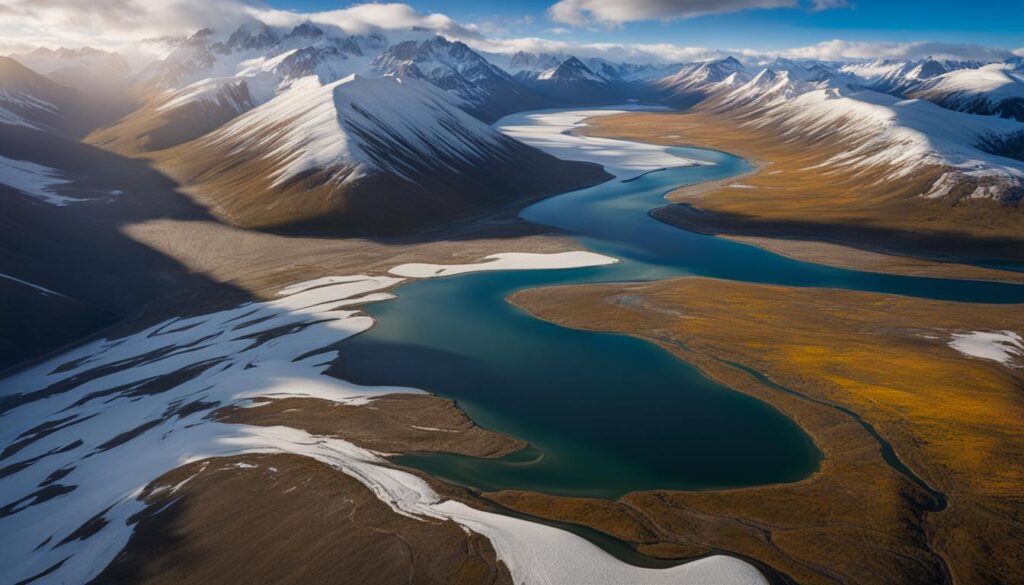
There are different ways to access Gates of the Arctic National Park, depending on your preference and location. The park is located in the northernmost part of Alaska, above the Arctic Circle. The most common methods of transportation to the park are by water, air, or land.
One option is to travel to the park by floating down one of the rivers that surround it. The Noatak, Koyukuk, and Kobuk Rivers are popular choices for those who enjoy packrafting. This method allows you to experience the scenic beauty of the Alaskan wilderness and gives you a unique perspective of the park as you navigate the river systems.
Another way to reach Gates of the Arctic is by air travel. Many visitors choose to charter a plane or take a commercial flight from Fairbanks to one of the park’s airstrips. This option provides a convenient and efficient way to access the park, especially for those with limited time or who prefer not to travel by water or land.
Lastly, you can also drive to Gates of the Arctic by taking the Dalton Highway. However, it’s important to note that the highway does not directly enter the park. It is recommended to consult a map or GPS system for the best route and to be aware of any possible road conditions or closures.
Whether you choose to travel by water, air, or land, getting to Gates of the Arctic National Park will be an adventure in itself. The remote location and untouched wilderness make it a truly unique destination for those seeking a true Alaskan experience.
Table: Methods of Accessing Gates of the Arctic National Park
| Transportation Method | Advantages | Disadvantages |
|---|---|---|
| Water (floating on rivers) | Scenic route, unique perspective, opportunity for packrafting | Requires outdoor skills, time-consuming |
| Air travel (charter or commercial flight) | Convenient, efficient, quick access | Potentially expensive, limited luggage capacity |
| Land (driving the Dalton Highway) | Opportunity for road trip, access to nearby towns | The highway does not directly enter the park, road conditions may vary |
History of Gates of the Arctic National Park
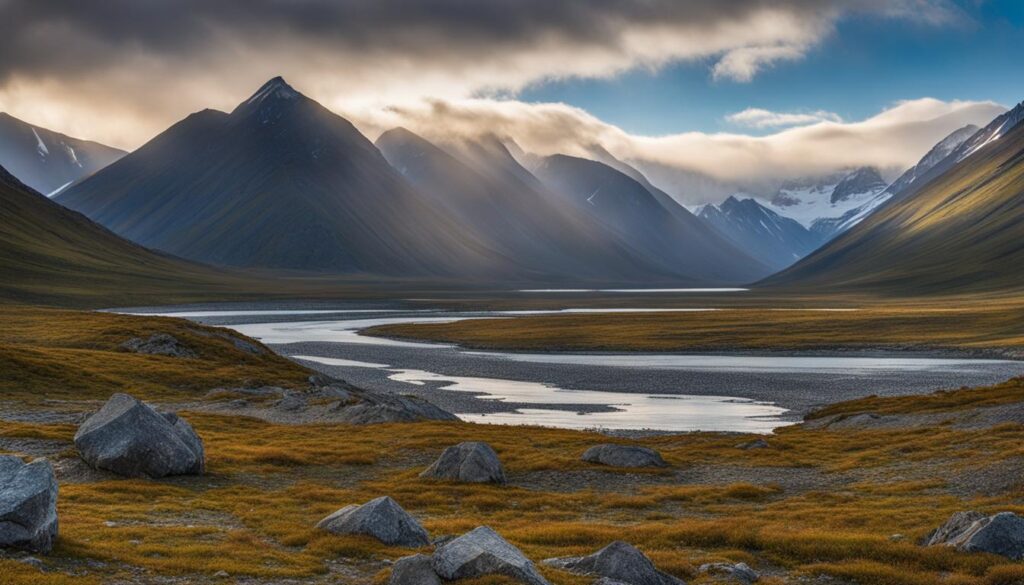
The history of Gates of the Arctic National Park begins with its establishment on December 1, 1978. Originally designated as a National Monument, the park was later upgraded to a National Park by President Jimmy Carter in 1980. The park’s creation was driven by the desire to preserve the vast, wild, and undeveloped character of Alaska’s central Brooks Range, as well as to provide opportunities for wilderness recreation and the preservation of traditional subsistence uses. Gates of the Arctic spans over 8.4 million acres of pristine wilderness, making it one of the most remote and untouched national parks in the United States.
The establishment of the park was guided by the Alaska National Interest Lands Conservation Act (ANILCA), which was signed into law in 1980. ANILCA recognized the unique ecological and cultural values of Alaska’s lands and aimed to protect and preserve them for the benefit of present and future generations. The act played a crucial role in the establishment of Gates of the Arctic National Park, ensuring the conservation of its vast landscapes and the protection of its delicate ecosystems.
In addition to the federally owned lands, Gates of the Arctic National Park also contains private inholdings and Native Corporation Land. These areas reflect the rich indigenous history of the region and the long-standing connection between the land and the native communities. The park recognizes the importance of preserving and respecting the cultural heritage of these lands while allowing for sustainable use and enjoyment.
Indigenous History and Cultural Heritage
The history of Gates of the Arctic National Park is deeply intertwined with the indigenous history and cultural heritage of the region. For over 13,000 years, indigenous peoples have inhabited and relied on the resources of this land, leaving behind a rich archaeological record and a legacy of traditional knowledge and practices.
The park is home to various indigenous communities, including the native Iñupiat, Athabaskan, and Yupik peoples. These communities have deep ties to the land and continue to maintain their cultural traditions and subsistence way of life. The preservation of indigenous cultural heritage is a core value of the park, and visitors are encouraged to learn about and respect the history, traditions, and contributions of the native peoples who have called this land home for generations.
Preserving a Wilderness Legacy
Gates of the Arctic National Park stands as a testament to the enduring spirit of wilderness preservation. With its vast and rugged landscapes, diverse wildlife, and rich cultural heritage, the park offers a glimpse into a world untouched by modern development.
As visitors explore the park’s remote and pristine wilderness, they are reminded of the importance of preserving these fragile ecosystems for future generations. By practicing minimum impact techniques, adhering to Leave No Trace principles, and respecting the cultural and natural resources of the park, visitors can contribute to the ongoing legacy of wilderness preservation in Gates of the Arctic National Park.
Nearby Towns and Communities
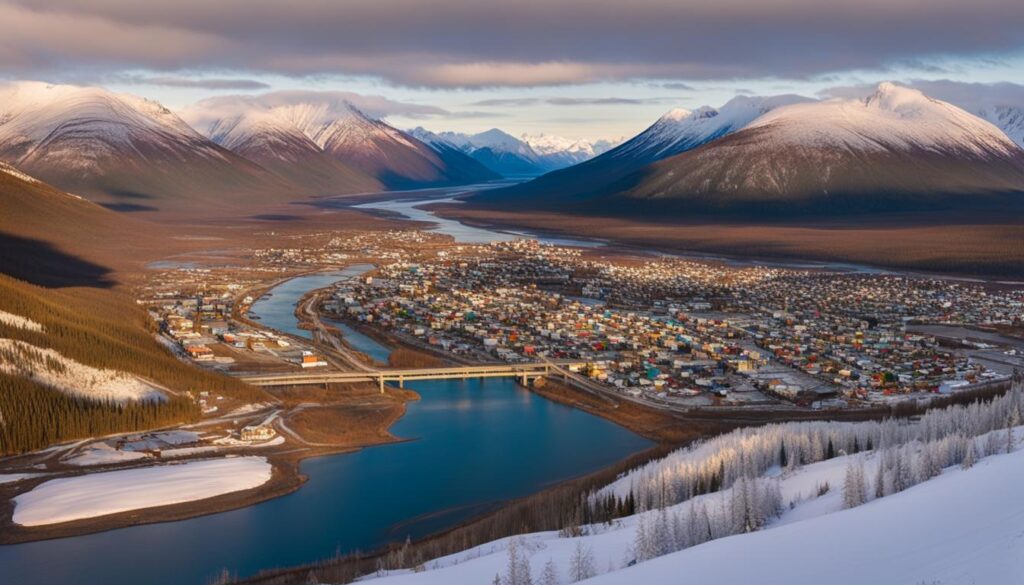
Gates of the Arctic National Park is surrounded by several towns and communities that serve as gateways to this remote wilderness. These nearby towns offer various amenities, transportation options, and accommodations for visitors looking to explore the park.
Anaktuvuk Pass
Anaktuvuk Pass is a small village located within the boundaries of Gates of the Arctic National Park. It serves as a cultural and educational center, offering a unique insight into the traditional Inupiaq way of life. Visitors can visit the ranger station and cultural center to learn about the history and heritage of the local community.
Bettles
Bettles is a small town located approximately 35 miles south of Gates of the Arctic National Park. It is a popular starting point for visitors planning to explore the park. The town offers lodging options, including hotels and cabins, as well as access to air transportation services.
Fairbanks
Fairbanks is a larger city located about 200 miles south of Gates of the Arctic National Park. It offers a wide range of services, including hotels, restaurants, and shopping centers. Fairbanks also serves as a major transportation hub, providing flights and other transportation options to reach the park.
Arctic Village
Arctic Village is a small Native village located to the east of Gates of the Arctic National Park. It offers accommodations, such as cabins, for visitors who want to experience the local culture and explore the surrounding area. The village is a gateway to the Arctic National Wildlife Refuge and offers unique opportunities for wildlife viewing and outdoor activities.
Brooks Range Communities
The Brooks Range region, where Gates of the Arctic National Park is located, is home to several remote communities. These communities include Coldfoot, Wiseman, and Venetie. While they are not directly adjacent to the park, they are within close proximity and offer lodging, dining, and other services for visitors.
Whether you choose to start your adventure from Anaktuvuk Pass, Bettles, Fairbanks, Arctic Village, or one of the Brooks Range communities, these nearby towns and communities provide important resources and support for visitors exploring Gates of the Arctic National Park.
Conclusion
After exploring the vast wilderness of Gates of the Arctic National Park, it is clear that this pristine and untouched landscape offers a truly unique experience for nature enthusiasts. With no established roads, trails, or campsites, the park provides an opportunity for exploration and discovery like no other. However, it is important to note that this remote and challenging terrain requires outdoor survival skills and self-sufficiency. Whether embarking on a backcountry expedition or taking a flight-seeing trip, visitors must be prepared to care for their own safety and be mindful of the fragile ecosystems.
By adhering to minimum impact techniques and Leave No Trace principles, we can help preserve the beauty and integrity of this remarkable Arctic wilderness. From the stunning scenic vistas to the abundant wildlife, Gates of the Arctic National Park offers an unforgettable adventure. It is a place where visitors can disconnect from the modern world and immerse themselves in the awe-inspiring power of nature. So, if you’re seeking an unparalleled wilderness experience, look no further than Gates of the Arctic National Park.
Plan your visit carefully, be prepared, and respect the delicate balance of this extraordinary place. Experience the magic of the Arctic and create memories that will last a lifetime. Whether you’re an experienced outdoor enthusiast or a first-time wilderness explorer, Gates of the Arctic National Park is ready to welcome you with open arms. So pack your gear, lace up your boots, and get ready for a journey into one of the last truly wild places on Earth.
FAQ
What are the weather conditions in Gates of the Arctic National Park?
Gates of the Arctic National Park experiences a harsh Arctic climate with extreme temperatures, unpredictable weather patterns, and frequent precipitation. It is important to be prepared for cold temperatures and changing weather conditions when visiting the park.
What are the key attractions in Gates of the Arctic National Park?
The key attractions in Gates of the Arctic National Park include its vast and untouched wilderness, stunning scenic vistas, abundant wildlife including caribou and grizzly bears, and the opportunity to view the northern lights.
What activities can I do in Gates of the Arctic National Park?
In Gates of the Arctic National Park, you can enjoy activities such as hiking, backpacking, wildlife spotting, fishing, flight-seeing trips, and overnight campouts at remote locations.
When is the best time to visit Gates of the Arctic National Park?
The best time to visit Gates of the Arctic National Park is during the summer months from mid-June to September when the weather is most favorable for outdoor activities and the park is accessible. Winter visits are not recommended due to extreme cold and limited accessibility.
What are the hours and operations in Gates of the Arctic National Park?
Gates of the Arctic National Park does not have established services or set operating hours. Visitor centers are available for information and backcountry orientation. Permits and reservations may be required for certain activities.
Are there RV parks or designated campsites in Gates of the Arctic National Park?
No, Gates of the Arctic National Park does not have established RV parks or designated campsites. The park encourages backcountry camping and wilderness exploration, with a focus on minimum impact techniques and adherence to Leave No Trace principles.
Are there hotels, campsites, or cabins in Gates of the Arctic National Park?
No, Gates of the Arctic National Park does not have established hotels, campsites, or cabins within the park boundaries. Visitors are encouraged to practice backcountry camping and wilderness exploration. Some air taxi operators offer overnight campouts at remote locations.
What should I consider when planning a visit to Gates of the Arctic National Park?
When planning a visit to Gates of the Arctic National Park, it is important to be proficient in outdoor survival skills, have the necessary equipment for a safe trip, and be flexible due to the park’s remote wilderness setting. Visitors should also be aware of regulations, guidelines, and safety precautions outlined by the park.
How can I access Gates of the Arctic National Park?
Gates of the Arctic National Park can be accessed by water, air, or land. Options include floating in on a packraft via rivers, chartering a plane or taking a commercial flight from Fairbanks, or driving the Dalton Highway, although it does not enter the park directly.
What is the history of Gates of the Arctic National Park?
Gates of the Arctic National Park was established in 1978 as a National Monument and upgraded to a National Park in 1980. Its purpose is to preserve the vast, wild, undeveloped character of Alaska’s central Brooks Range. The park has a rich history with human presence for over 13,000 years and contains private inholdings and Native Corporation Land.
Are there nearby towns and communities near Gates of the Arctic National Park?
Yes, there are several nearby towns and communities that serve as gateways to Gates of the Arctic National Park, including Anaktuvuk Pass, Bettles, Fairbanks, and Arctic Village. These towns provide access to transportation, supplies, and information for visitors planning a trip to the park.

